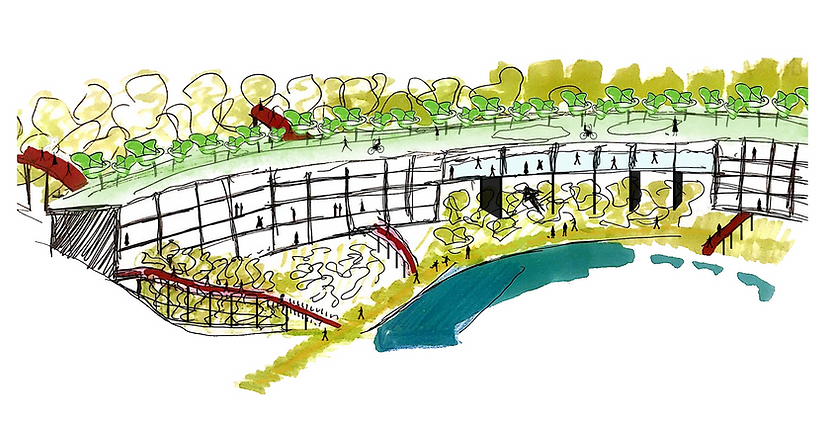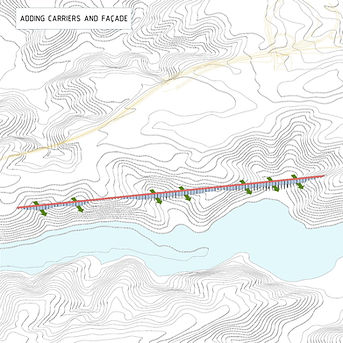CENDERE VALLEY
This project envisions a two-kilometer-long architectural structure designed as a sanctuary for people trying to sustain life and preserve greenery in a post-apocalyptic era dominated by concrete.


First, let us examine the Cendere Valley, located in Eyüp, Istanbul, Türkiye. With the increasing urban population, the expanding concrete fabric of the city has begun to threaten the northern forests — the primary source of life and ecological balance for Istanbul. The valley stands as a transitional zone between the remaining natural landscapes and the dense urban fabric. Once a vital ecological corridor connecting the city to the northern forests, Cendere Valley now faces intense pressure from rapid urban development. This project aims to reinterpret the valley as a living boundary — a space where architecture, nature, and human life coexist in a delicate balance rather than in conflict.







Situated along the edge of the Cendere Valley, this structure is positioned on a sloping topography, functioning as a linear walkway across the terrain — inspired by the High Line in New York. At the same time, it offers a sequence of public and private living spaces that are defined and shaped by the contours of the landscape. The building is conceived as a modular system that adapts to the natural slope, allowing flexibility in both construction and use. Each module integrates structural and ecological elements — creating self-sufficient units that can evolve over time. This modular approach not only minimizes the building’s footprint on the terrain but also establishes a dynamic dialogue between architecture and the landscape, where built and natural environments grow together in harmony.












Inspired by Le Corbusier’s modular principles, the project envisions a two-kilometer-long structure along the edge of Cendere Valley. Settled on a sloping terrain, it combines accommodation modules with public and communal spaces, forming a linear walkway that adapts to the landscape.
The design acts as a living system — where architecture, nature, and human life coexist, reintroducing greenery and vitality into an urban environment once consumed by concrete.
The structure unfolds as a continuous linear mass integrated into the sloping terrain of Cendere Valley. Each level of the building responds to the topography, creating a vertical sequence of interconnected public and private programs. While the upper levels host social and cultural functions such as libraries, workshops, restaurants, and studios, the lower levels accommodate living units and shared spaces that directly engage with the landscape.
The modular structural system allows flexibility in both horizontal and vertical organization. Repetitive yet adaptable modules define a rhythm along the 2-kilometer-long building, enabling different programmatic configurations without disturbing the overall continuity. This modularity ensures a sustainable approach to construction, providing ease of maintenance and potential for future transformation.
Sections reveal how the architecture embraces the natural slope — generating intermediate green terraces and open courtyards that bring daylight and vegetation deep into the structure. These voids act as breathing spaces where social life and nature intertwine. Circulation paths are designed as continuous walkways, allowing users to experience the building as an elevated linear park that reconnects urban life with the valley’s ecological texture.

accommodation modules:










PERŞEMBE PAZARI
Karaköy
